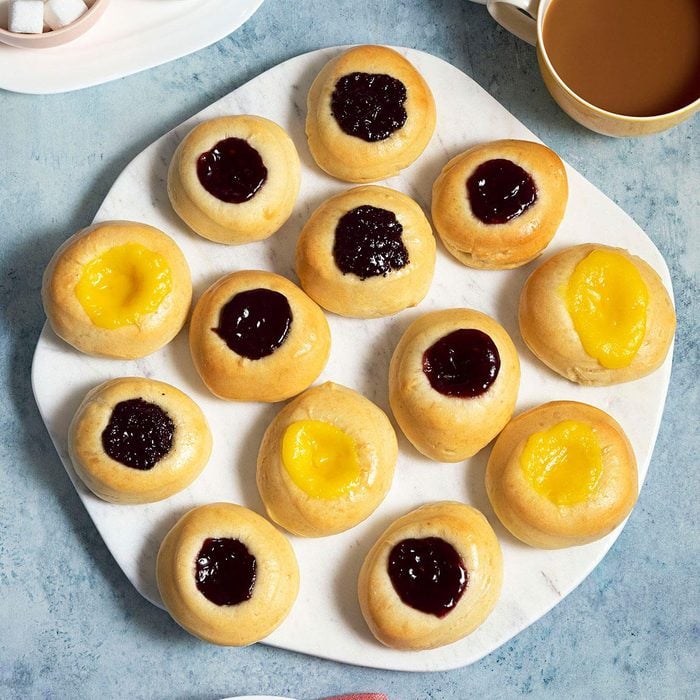If you’ve been to the Czech Republic or to the state of Texas, you’ve most likely sunk your teeth into delicious kolaches, and you’ve probably been searching for how to make kolaches ever since. We get it! The pillowy, buttery, brioche-like pastries with different baked-in fillings are completely irresistible. Fortunately, our traditional kolache recipe doesn’t just fill the void, it recreates the pastry so perfectly you’ll be transported back to Czechia or Texas’s Czech Belt.
What is a kolache?
A kolache is a Czech pastry that has a pillowy, brioche-like dough with some sort of baked-in filling. The most traditional fillings are prune, cream cheese, poppy seed and apricot, with lemon and cherry kolaches being popular, too (although maybe not as traditional).
Czech kolaches are not the same as Polish kolachkes (also spelled as “kolaczki”), but these pastries are commonly mistaken for one another. Polish kolachkes do not use yeast and are more like cookies with a filling, whereas Czech kolaches are more like brioche buns with a filling. In fact, many European countries claim some variation of these pastries as their own, stuffing them with preserves, cheese fillings and even chocolates.
What is the pronunciation of kolaches?
Kolache is pronounced two different ways: koe-lah-chee or koe-lah-cha, depending on where the speaker was raised. In the Czech language, “kolache” is the plural form of the pastry; in America, the plural is commonly referred to as “kolaches,” which undoubtedly stems from the plural rules of the English language. “Kolach” is the singular form and is pronounced as koh-lach, but many Americans refer to the singular form as “kolache.”
Ingredients for Kolaches
- Active dry yeast: We prefer active dry yeast (as opposed to other types of yeast) for this kolache recipe because of its long shelf life and easy activation.
- Milk: We don’t recommend using any milk with less than 2% fat as it’ll poorly effect the texture and taste. However, you can use whole milk instead of 2% milk if you want a richer flavor.
- Egg yolks: Room-temperature egg yolks blend into the kolache dough more easily than cold eggs. We use only the yolks for the rich fat they impart, but make sure to save an egg white for the kolache wash.
- Canned filling: Use premade prune, poppy seed, cherry or lemon pie filling for these kolaches. Or, you could make your own filling.
- Egg whites: We brush these kolaches with an egg white before putting them in the oven to create a shiny, glossy finish.
Directions
Step 1: Activate the yeast
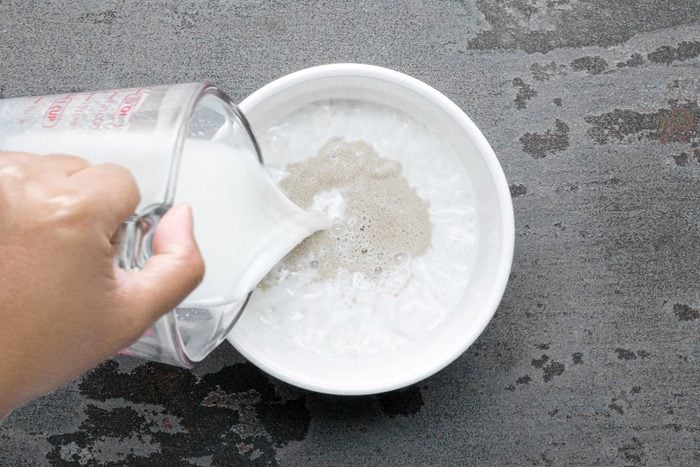
In a small bowl, dissolve the yeast and 1 tablespoon sugar in the warm milk (110-115°F). Let the yeast mixture stand about 10 minutes.
Editor’s Tip: After about 10 minutes, the yeast mixture should be foaming and bubbling. If it does not froth, discard it and start over. Make sure your yeast isn’t expired and use a cooking thermometer to check the milk’s temperature.
Step 2: Create the dough

In a large bowl, combine 2 cups flour, the remaining sugar, the egg yolks, the salt, the butter and the yeast mixture.

Stir everything together until it’s smooth. Add enough remaining flour to make a stiff dough.
Step 3: Knead the dough
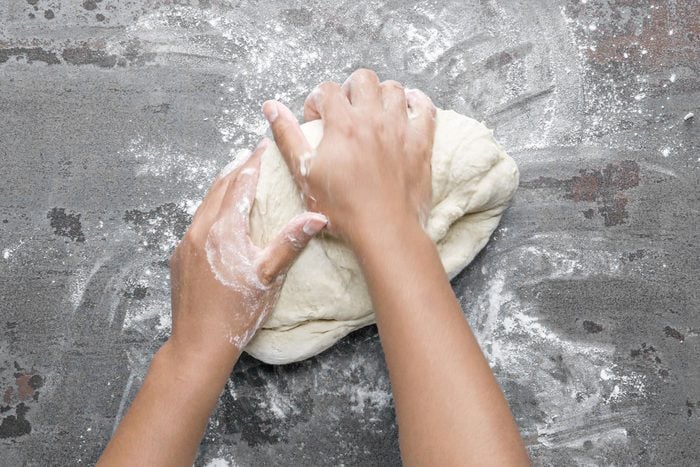
Lightly flour a clean surface and turn the dough out. Knead the dough until it’s smooth and elastic, six to eight minutes. Add additional flour if a lot of sticking happens.
Editor’s Tip: To tell if dough is kneaded enough, press it with your finger. If the dough stays indented, keep kneading. If the dough bounces back to its original shape, you’re good to go.
Step 4: Proof the dough
Place the dough in a greased bowl, turning the dough ball once to grease the top. Cover the bowl with a clean towel or paper towels, and let the dough rise in a warm place until it’s doubled in bulk, about one hour.

Punch the dough down and allow it to rise again, about 15 minutes.
Step 5: Cut out the kolaches and let them rise
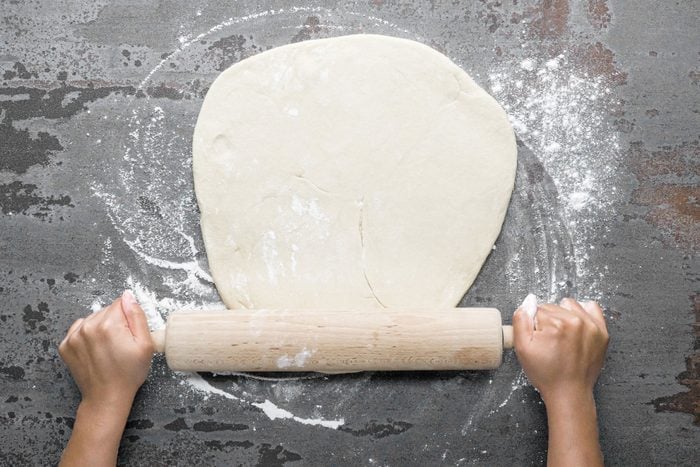
Roll the dough out on a floured surface to a 1/2-inch thickness.

Cut the dough with a large glass or a 2-1/2-inch dough cutter.
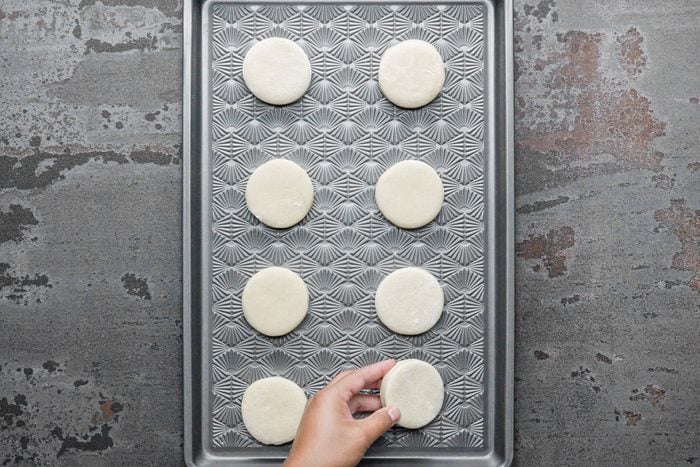
Place the cut out dough on greased baking sheets, and let the cutouts rise until they have doubled in size, about 45 minutes.
Step 6: Assemble the kolaches
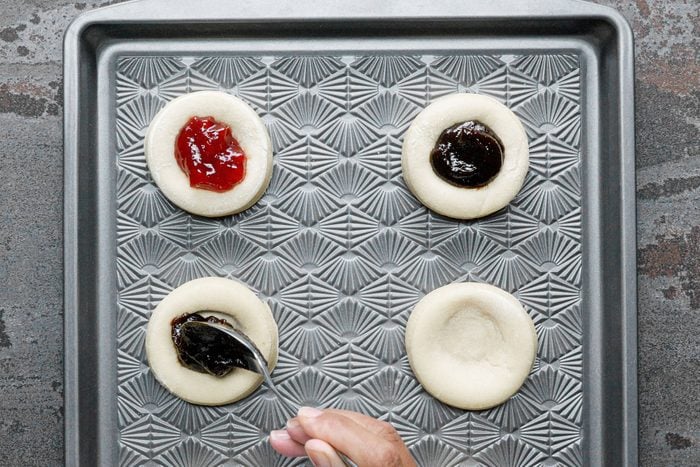
Preheat your oven to 350°. Using your fingers, firmly press an indentation into the center of each cutout. Fill each divot with a heaping tablespoon of your choice of filling.

Using a pastry brush or your fingers, brush the edge of each cutout with the egg white.
Step 7: Bake the kolaches
Bake the pastries until they are light golden brown, 10 to 15 minutes.
Editor’s Tip: Once the kolaches are out of the oven, place them on a wire rack. Allow them to cool at room temperature for a bit, and eat them once they’re warm or at room temperature.

Kolache Variations
- Whip up a poppy seed filling: Although an acquired taste, poppy seed filling is a traditional kolache filling. See how to make our poppy seed kolaches recipe to try it for yourself.
- Indulge in a cream cheese filling: If you know how delicious a cream cheese Danish is, a cream cheese kolache is just as irresistible. Interested? Try our lemon cream cheese kolaches recipe.
- Use your favorite preserves: Use this kolache recipe as an excuse to buy (or make!) your favorite jar of preserves. We highly recommend using preserves instead of thin jams or jellies. The latter may boil up and overflow onto the pastries in the oven, ruining the look of your precious treats.
How to Store Kolaches
To store kolaches, allow them to cool completely to room temperature, then place them in an airtight container so they don’t dry out. Keep them at room temperature for up to three days. If your kolaches have a cream cheese filling, place them in the fridge for up to three days,
Kolache Tips
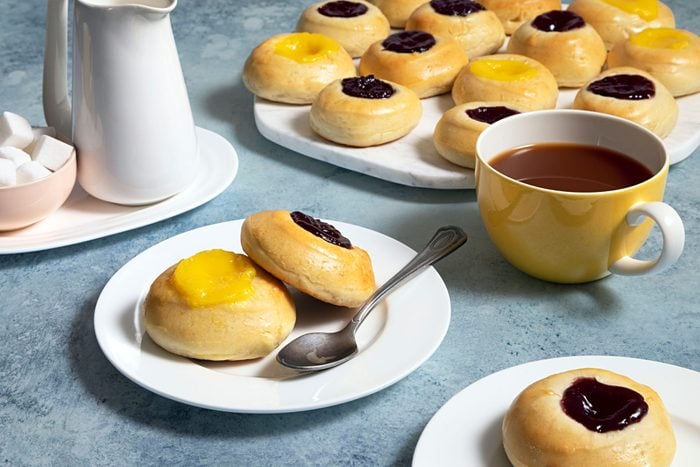
What can you serve with kolaches?
A kolache makes an incredible breakfast treat or a lovely snack all on its own, but it’s nice served with a side of fruit and a cup of coffee or tea.
What is the origin of kolaches?
The kolache origin winds all the way to the Czech Republic, formerly known as Bohemia, where kolaches are eaten during svacina (an afternoon snack). Once Czech settlers made their way to Texas during the mid-1800s, they brought their old-world recipes with them, including the pillowy, soft kolaches. (Hey—not far off from paczki origins!)
The love of this pastry continues to thrive in the many Czech American communities now in Texas (known as the Czech Belt). Because of this, kolache fillings have been Americanized with untraditional pineapple, strawberry, blueberry, and out-of-the-box options like PB&J, pumpkin cream cheese, coconut and chocolate-banana, to name a few.


















